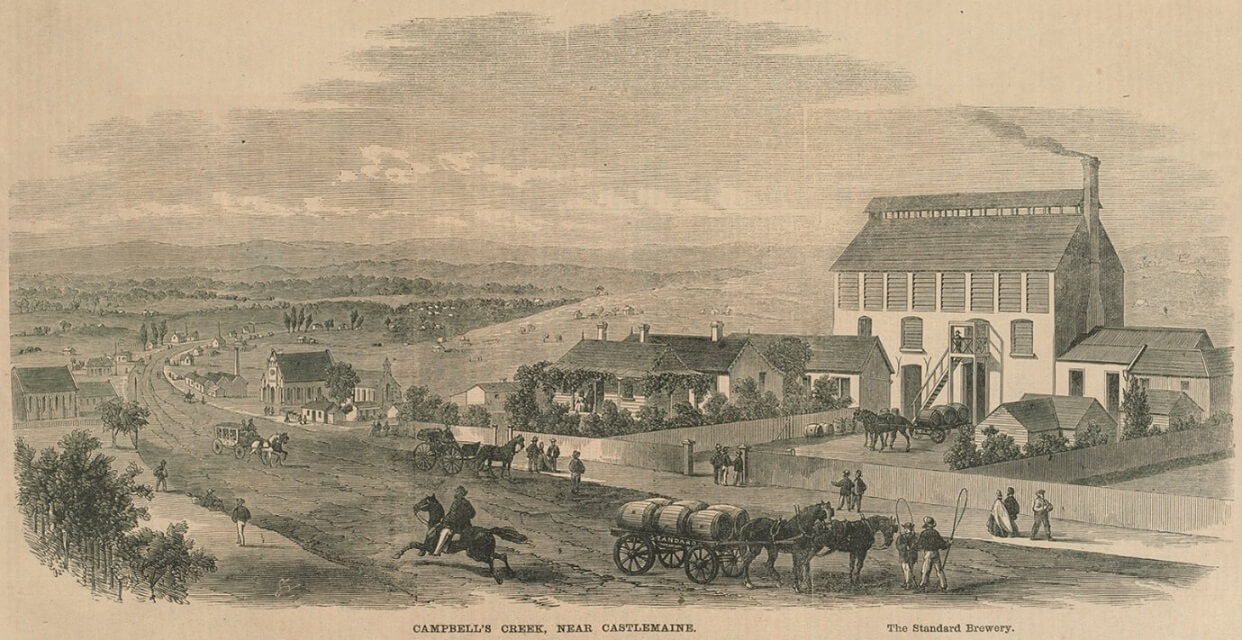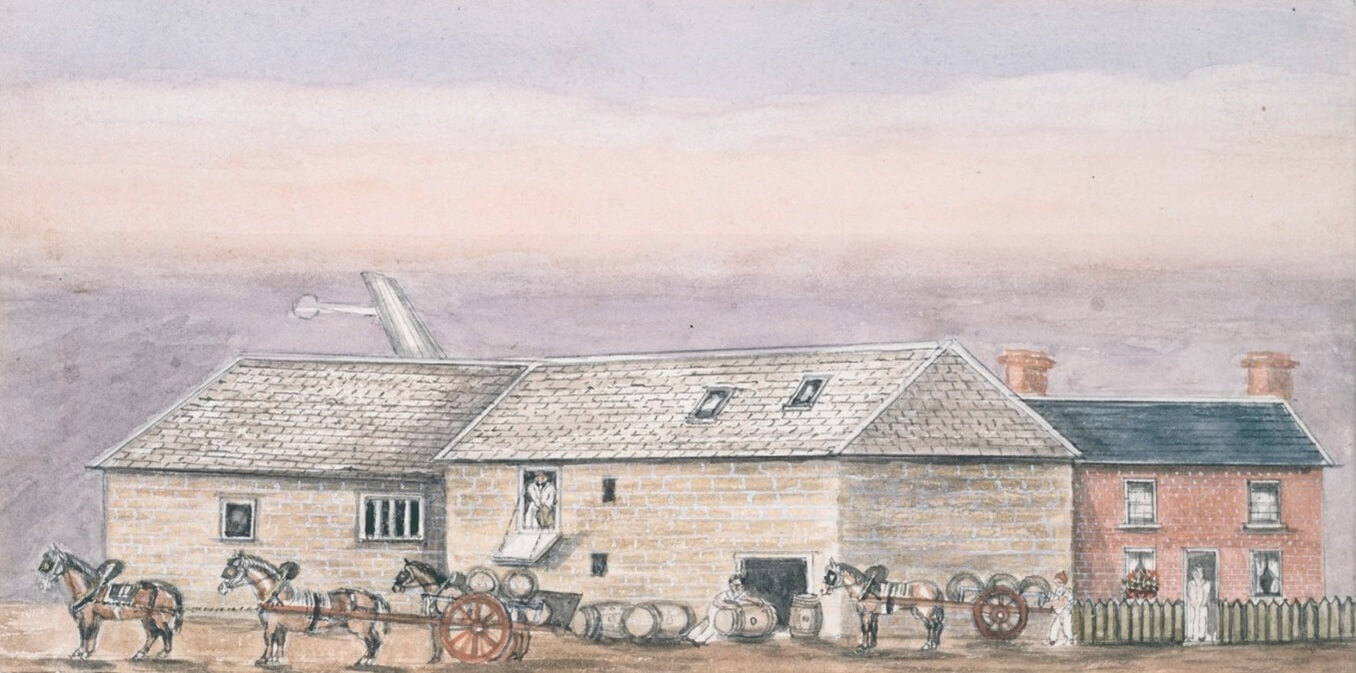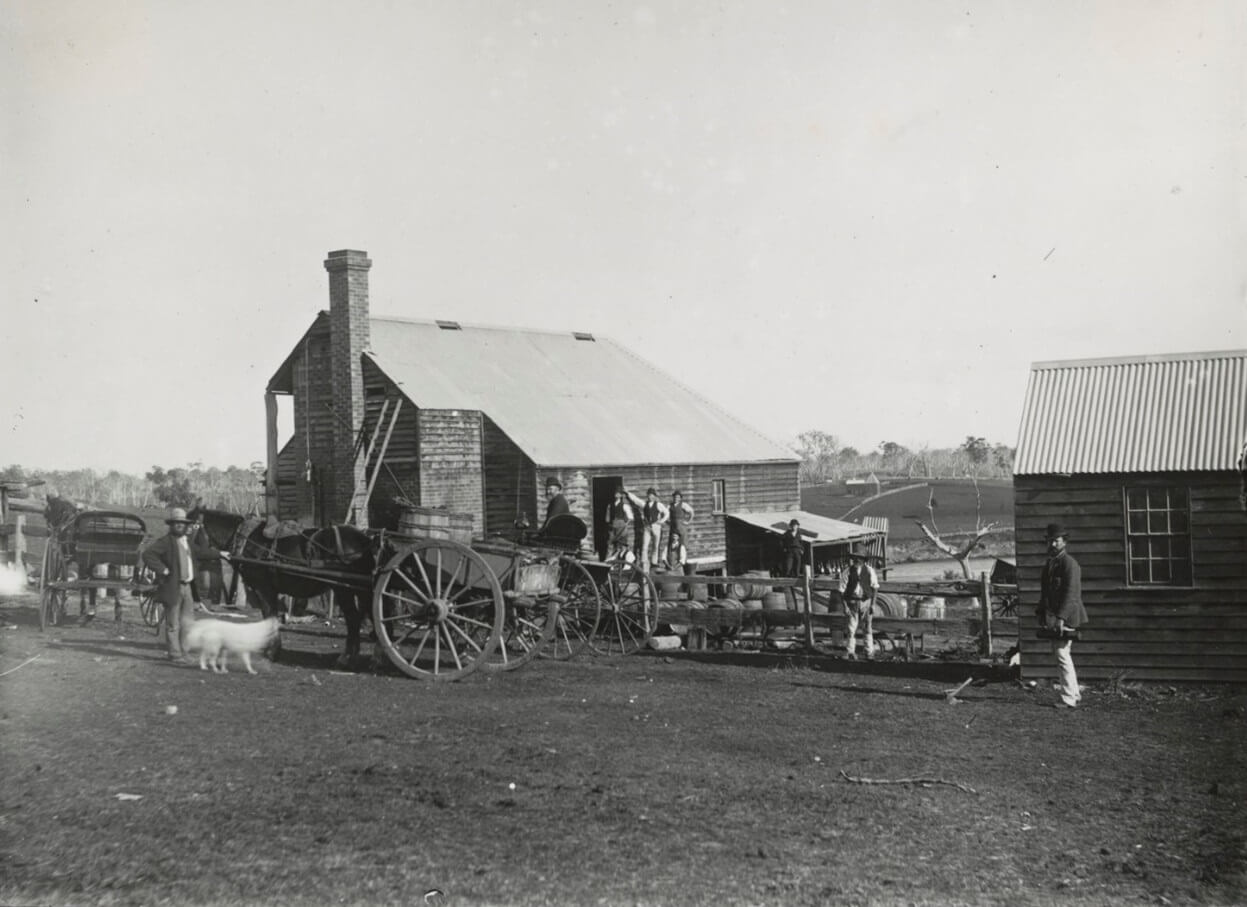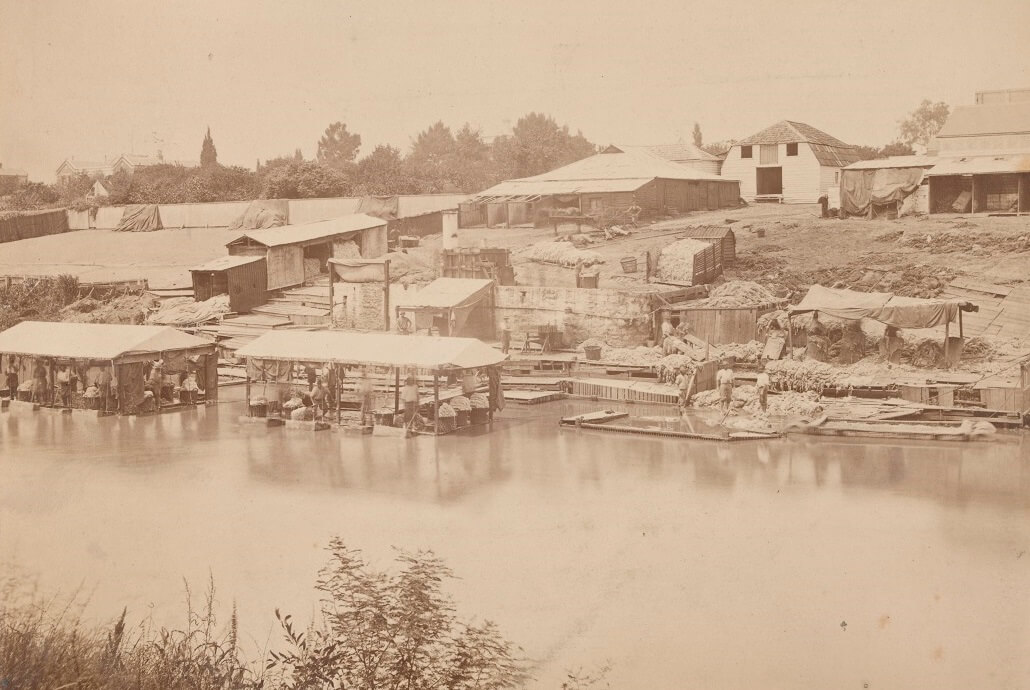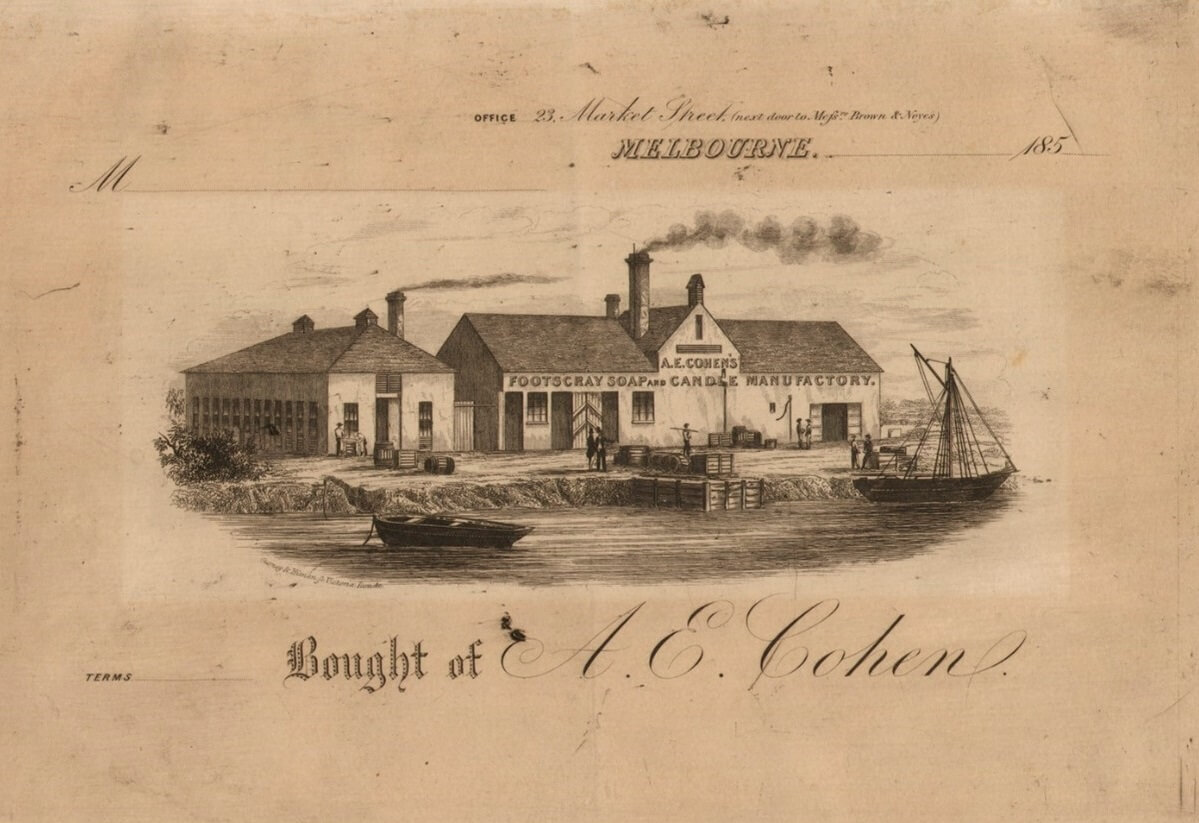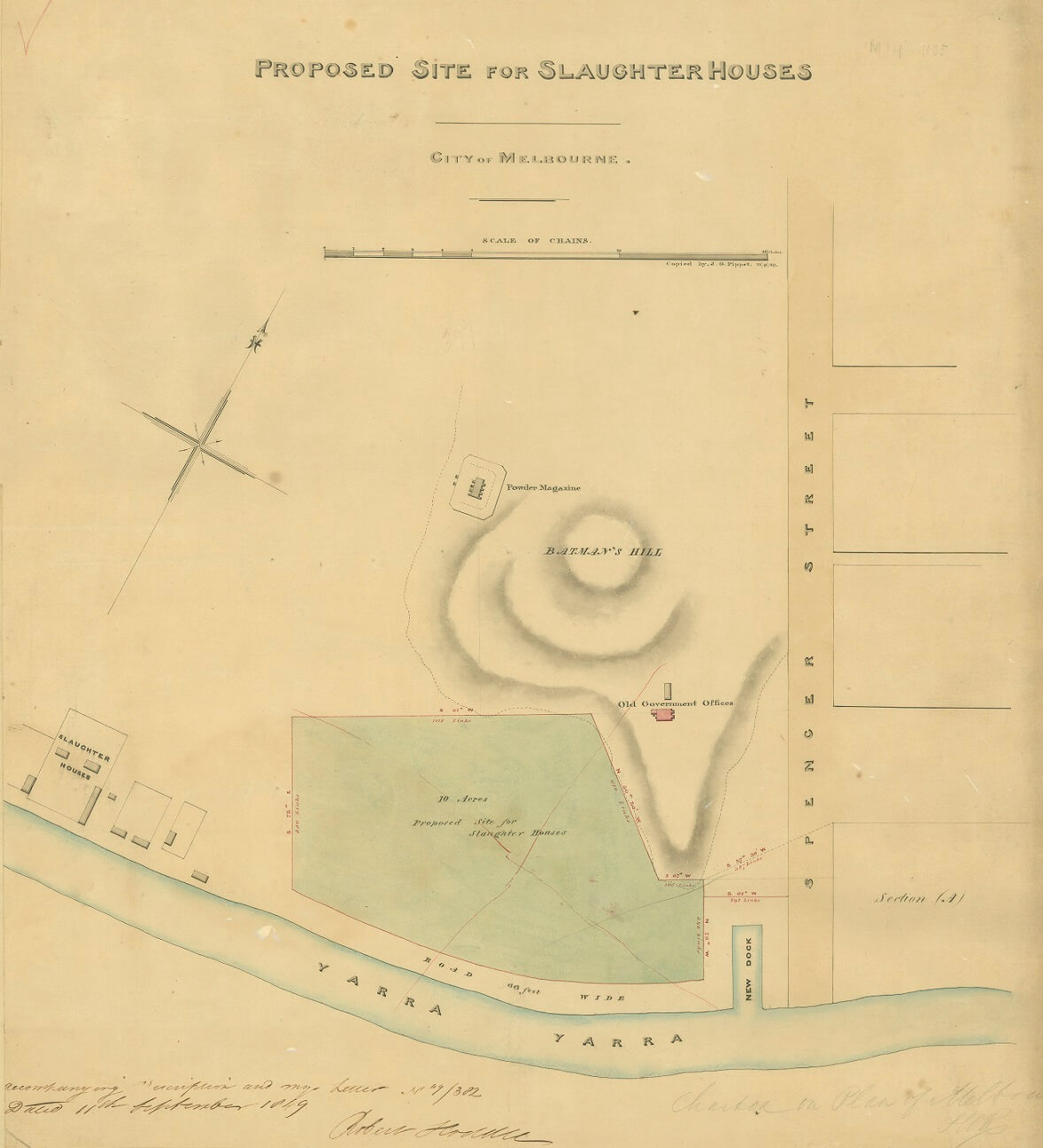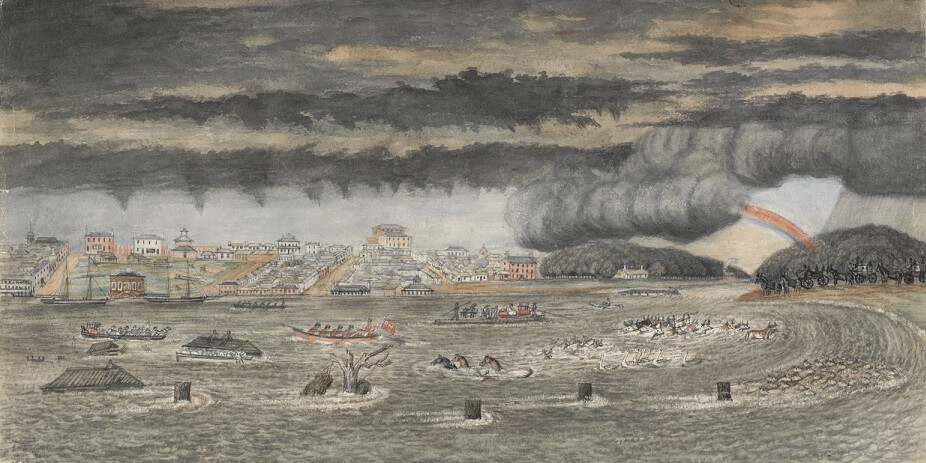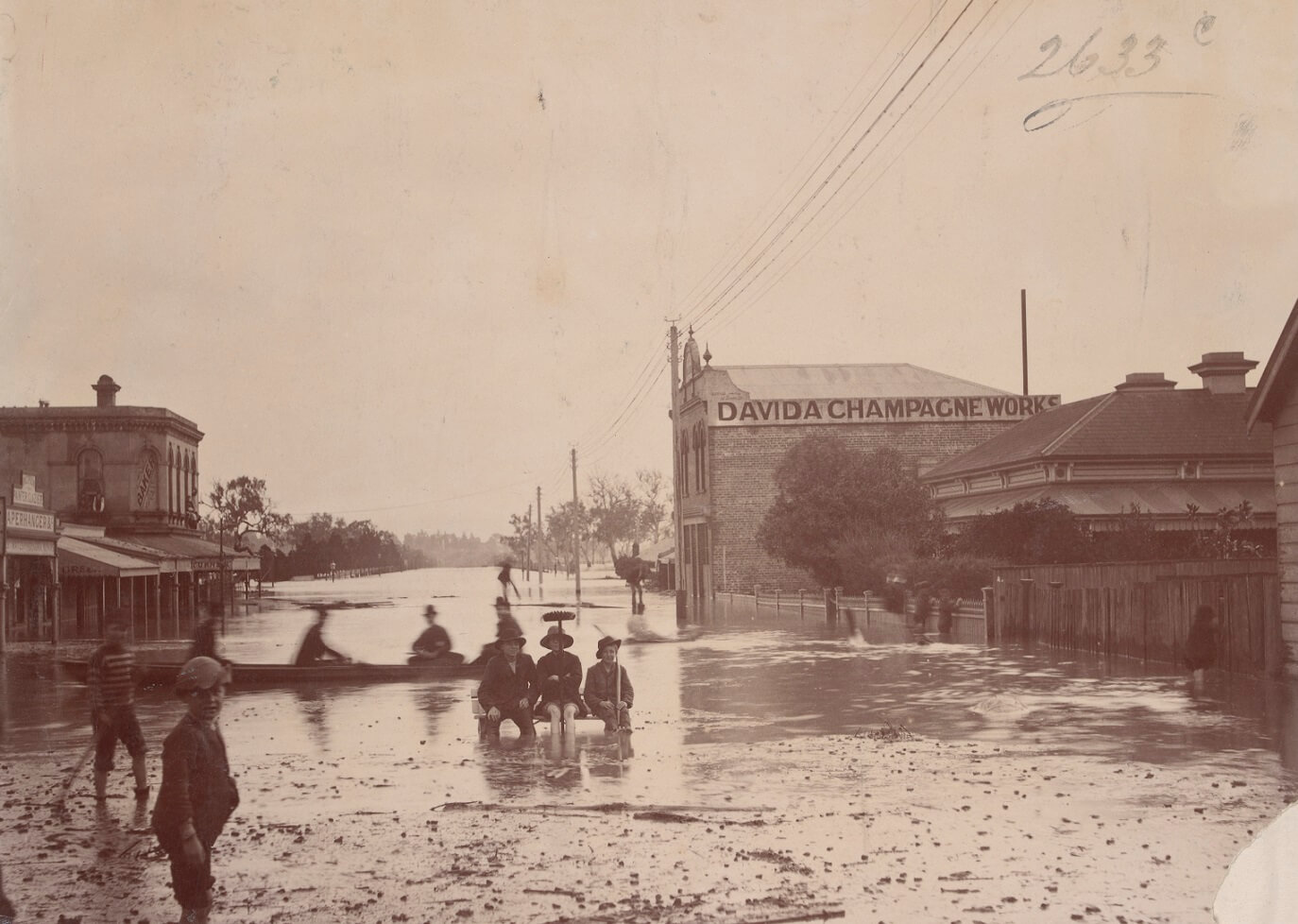The earliest factories were usually called ‘workshops’ or ‘shops’ for short, and most were small, employing only a handful of workers. In the early years the emphasis was on processing the products of primary industry — flour milling, brewing, soft-drink manufacturing, candle and soap making, tanning, felting, milk and butter production. Local producers could not compete with cheap British imports for most other goods. In Melbourne many of these workshops were clustered in the inner city around the river, but small regional factories were also common. In the years before refrigeration, many products could not be transported very far without spoiling, and transport was also expensive. Regional towns of any size usually had their own breweries, flour mills and later, cheese and butter factories, along with smaller concerns like town bakeries.
Campbell’s Creek, near Castlemaine, The Standard Brewery
Joseph Wheeler photographer, 24 March 1864. Samuel Calvert engraver
Reproduced courtesy State Library Victoria
Liardet, W. F. E. The Melbourne Brewery and Distillery, 1875
Watercolour with pen and ink drawing
Courtesy State Library Victoria
The Brewery, Pic Nic Point Bairnsdale, undated but c.1880-1900
F.W. Eastwood photographer. Gelatin silver print
Reproduced courtesy State Library Victoria
Access to water was essential for many production processes and in the early years in Melbourne those industries tended to cluster along the banks of the Yarra. Noxious trades like tallow works, glue works, bone mills, fellmongers, tanners, wool washers and soap works soon spread along the riverbanks. Many were located along the lower reaches of the river, and then upstream near the suburb of Collingwood, which housed many of the ‘hands’ who worked in these trades. Within a very few years the river was seriously polluted, with waste products often dumped indiscriminately in its waters, along with the human waste from low-lying suburbs.
Wool washing on the Yarra, by Charles Nettleton, photographer, 1872
Reproduced courtesy State Library Victoria
Industry also expanded along Melbourne’s other waterways, notably along the Maribyrnong River to the west. The nearby suburb of Footscray grew up around these workshops and housed many of the workers.
A E Cohen’s Footscray Soap and Candle Manufactory, 1852
Reproduced courtesy State Library Victoria
This factory was literally on the banks of the river.
Even facilities like slaughter houses were initially located along the river, where waste products, like blood, fat and offal was dumped indiscriminately. Surveyor General Robert Hoddle drew up plans in 1849 for slaughter houses to be located on the banks of the Yarra just below Batman’s Hill.
Robert Hoddle, surveyor, Proposed site for Slaughter Houses, 1849
Reproduced courtesy Public Record Office Victoria. VPRS 8168, P2, Unit 51.
This slaughterhouse was planned to be located below Batman’s Hill on the Yarra.
Not surprisingly, all of these industries were very vulnerable to flooding. When the Yarra broke its banks, which it did periodically throughout the nineteenth century, the loss to industry could be heavy. In the ‘Great Flood’ of 1891 many workshops on low-lying land were inundated, despite the flood mitigation works completed in recent years. Homes and factories were flooded from Richmond to Port Melbourne when more than five inches of rain fell in less than four days in July. Footscray was also flooded when local creeks overflowed their banks, while Elizabeth Street in the city was reportedly a ‘roaring torrent’. Workshops affected included Peacock’s jam factory, located near the Yarra below Princes Bridge, Langlands Foundry and the Otis Elevator Works, built on flat land to the south of Princes Bridge, amongst many other premises. Further upstream between Dights Falls and the Hawthorn Bridge the Yarra Falls Roller Mills suffered ‘considerable loss’. The Argus published a detailed account of the progress of the flood. (Argus, 13 July 1891, p. 5)
The flood of 1849, by artist W.F.E. Liardet
Reproduced courtesy State Library Victoria
Shows the Yarra River in flood, with boats and sailing ships, horses, cattle, sheep and birds in the floodwater.
Flooding in Swan Street, Richmond, 1891
Reproduced courtesy State Library Victoria
A polluted waterway
The spread of industry along the riverbanks had an immediate impact on water quality. In the 1850s visitors to Melbourne complained about the state of the river and warned of the dangers of drinking its waters. Mrs A. Campbell, who arrived in Melbourne from Quebec in 1853, was unimpressed by Melbourne overall, but she reserved special criticism for the state of its river, which she described as a ‘filthy little muddy stream’, much polluted by wool washing and other noxious industries. (Mrs A Campbell, Rough and Smooth, 1865: 47)

